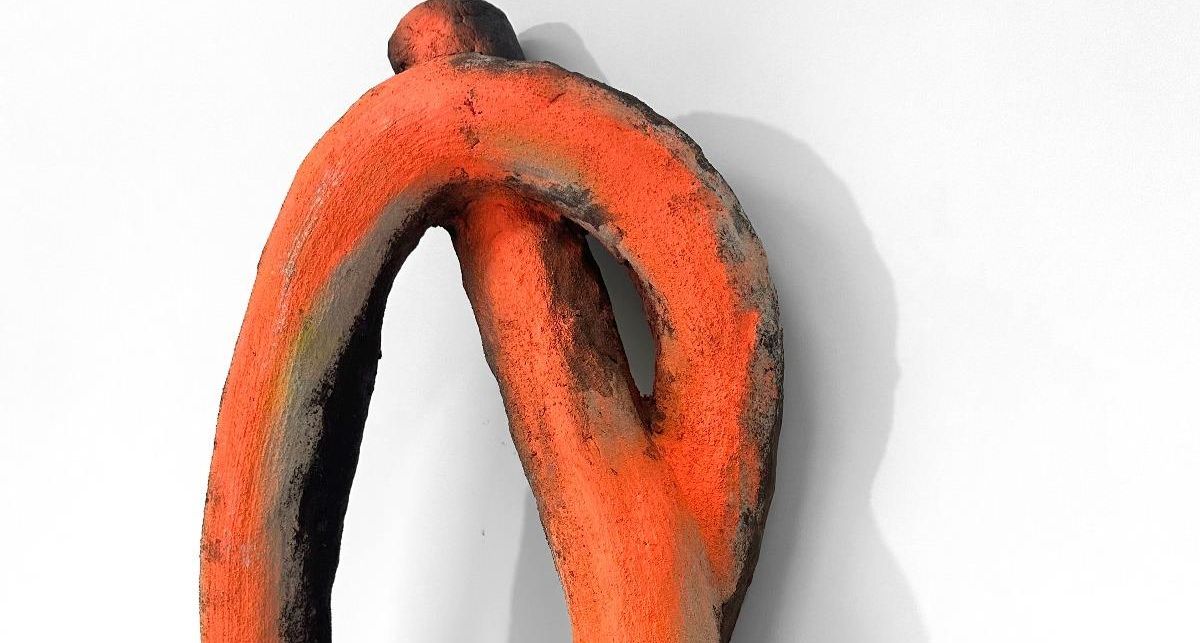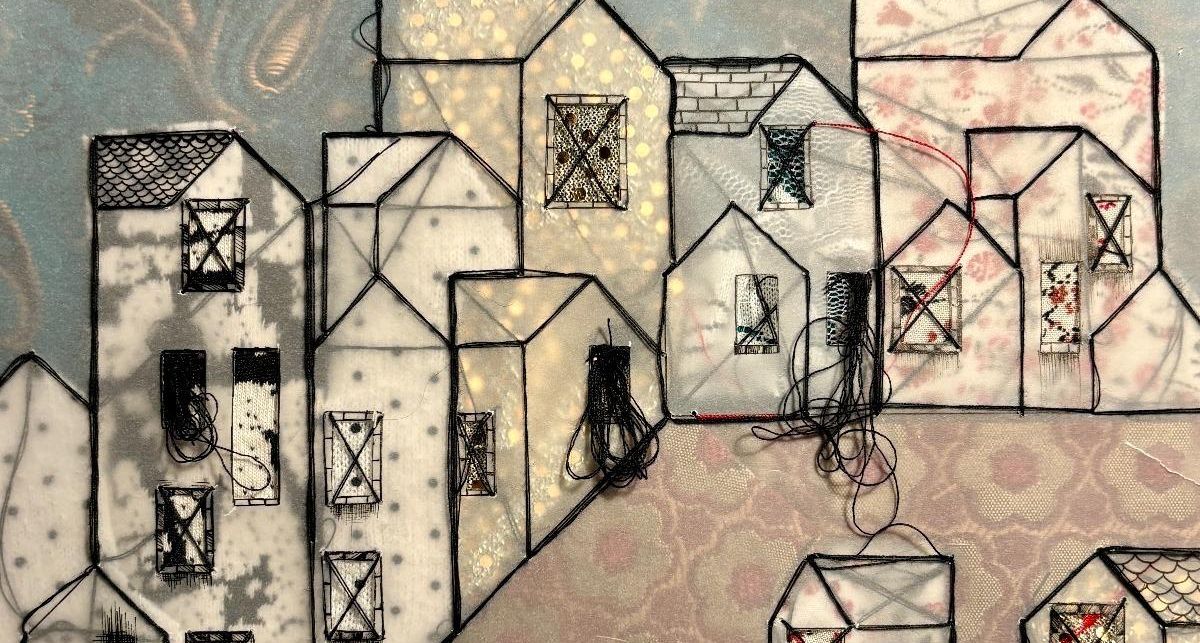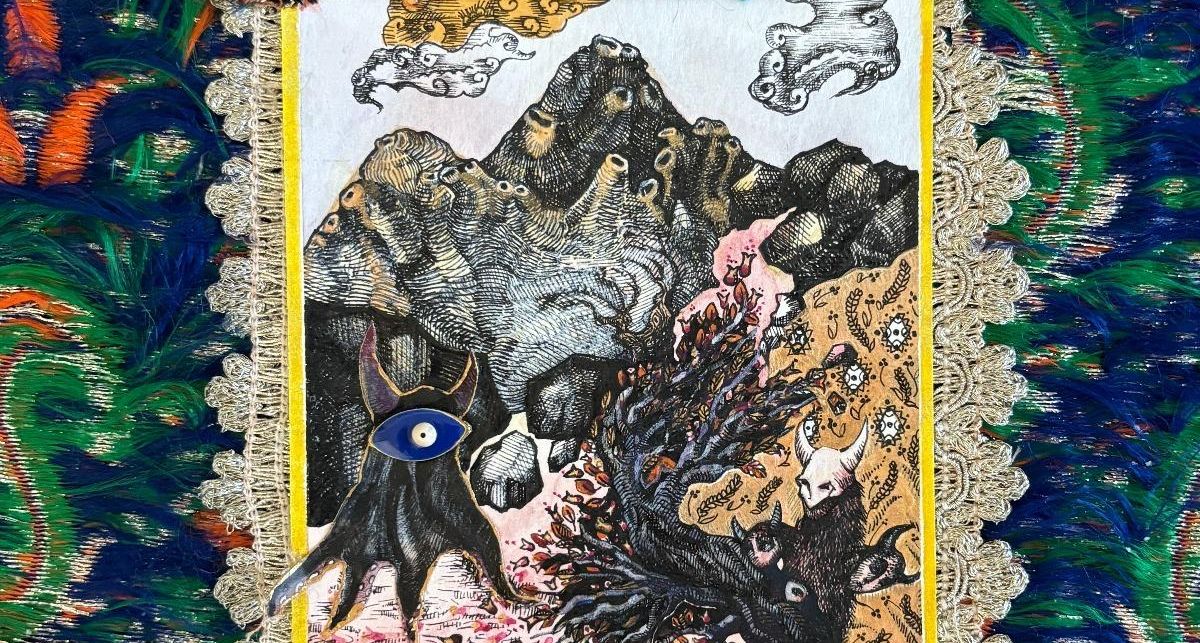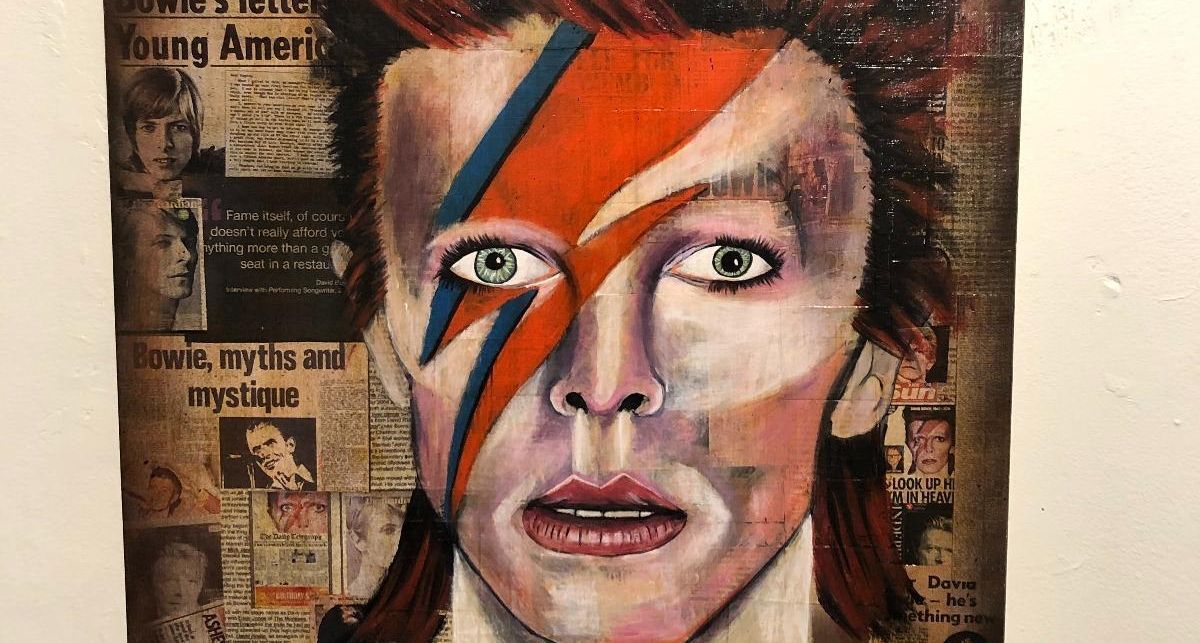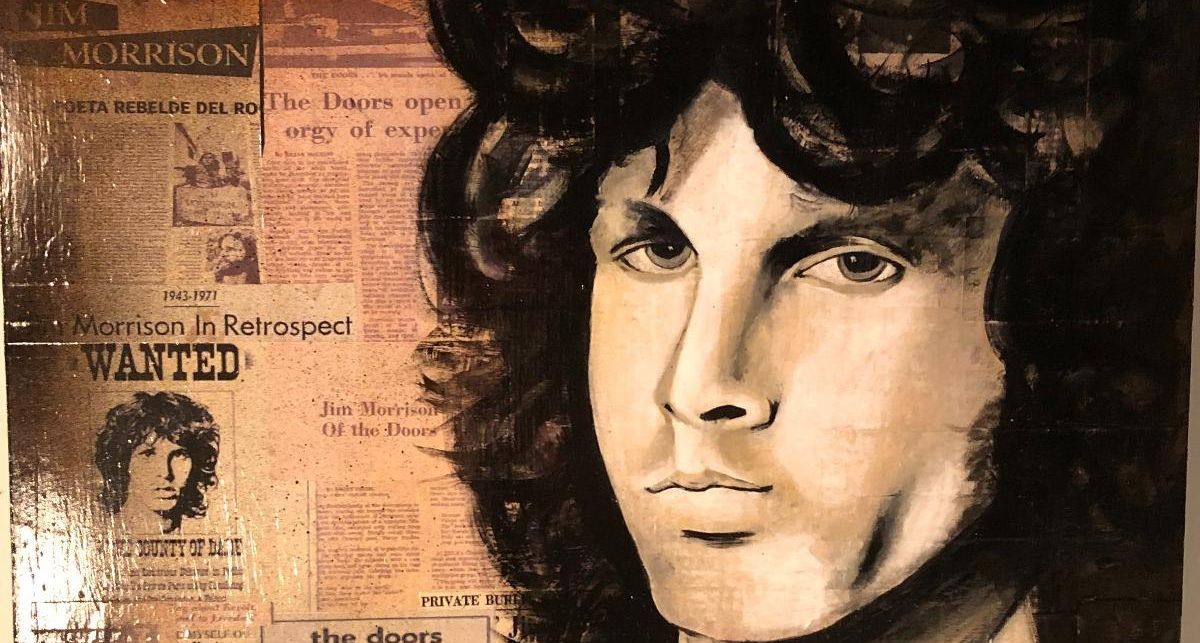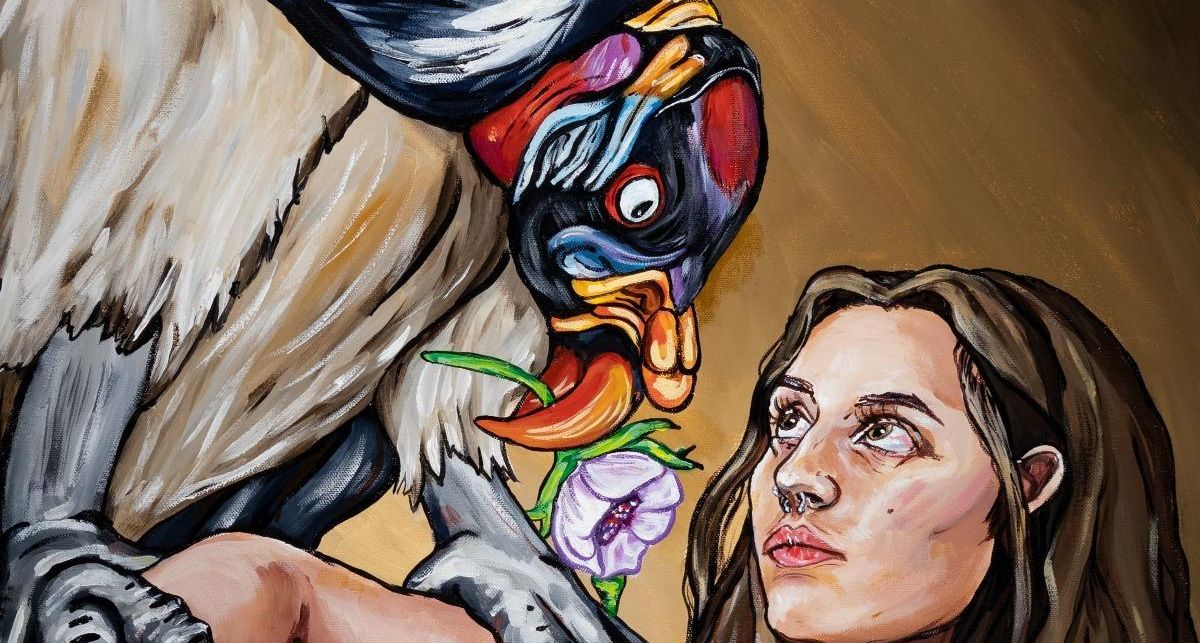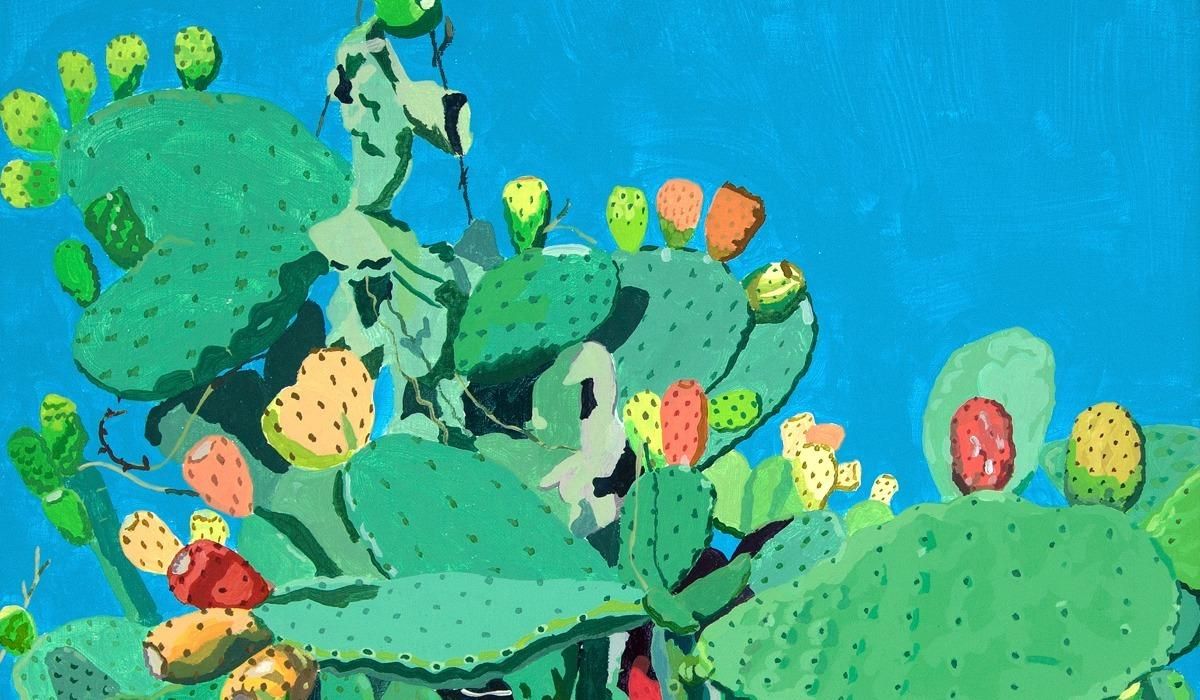
Truckee Meadows Community College (TMCC) Art Galleries are exhibiting four new exhibitions. The Main Gallery will host two Bay Area artists, Courtney Sennish and Lisa Rock. Our third-floor galleries will also be hosting three local artists exhibiting solo exhibitions. The exhibitions run from Tuesday, Nov. 12, to Thursday, Dec. 5, at four locations on the Dandini Campus. There will be an opening artists’ reception on Wednesday, Nov. 13, from 5-7 p.m. at the V. James Eardley Student Center and Red Mountain Gallery on the third floor of the Red Mountain Building on the Dandini Campus. Refreshments will be available, and exhibitions open to the public.
The TMCC Main Gallery will feature Roadside Attraction by Courtney Sennish and Lisa Rock. This exhibition is a compelling exploration of the intersection between urban infrastructure and natural growth, offering a unique pairing of sculpture and two-dimensional works that draw upon the visual language of the urban landscape. Through the creative practices of Sennish and Rock, the exhibition delves into the often overlooked or fleeting moments present in our surroundings, emphasizing how the built and planted environments coexist, overlap, and contrast. Sennish’s sculptures and prints take from the built environment’s textures, forms, and materials. In her work, elements like concrete, metal, and industrial patterns–ubiquitous in cityscapes–are transformed into something aesthetically rich, highlighting the beauty in the mundane. Her works serve as abstractions of urban life, emphasizing the structural aspects that often go unnoticed, like the grid patterns of streets, the rough surfaces of pavement, or the hard lines of architectural features.
“Roadside Attraction explores the dynamic relationship between urban infrastructure and natural growth. This exhibition beautifully juxtaposes Sennish’s sculptural and print-based works, which transform the concrete and industrial elements of the city into aesthetic reflections of urban life, with Rock’s vibrant paintings that celebrate the resilience of nature within the urban landscape. Together, they invite viewers to discover the often-overlooked moments that highlight the coexistence of the built and planted environments on patterns, textures, and colors. Roadside Attraction encourages us to appreciate the intricate dialogue between society’s creations and nature’s tenacity, unveiling the beauty that emerges from their interplay,” said Kyle Karrasch, Art Galleries Curator.
In contrast, Rock’s paintings focus on the planted elements of the environment, offering a more organic counterpart to Sennish’s industrial forms. Rock’s works highlight the resilience and persistence of nature within the urban sprawl, capturing how plants carve out their own spaces amid concrete jungles. The texture and movement in her brushstrokes suggest thriving, yet often unnoticed, vegetation vitality. Rock’s use of color and pattern brings attention to how plants grow in the cracks of sidewalks or climb-up brick walls, a quiet but powerful presence in the urban ecosystem. Both artists center their practice on the formal qualities of pattern, texture, color, and shape, using these elements to forge a dialogue between their works.
The Red Mountain Gallery, located on the third floor adjacent to Admissions, features Stitching in Silence, Beneath the Skin by Sogand Tabatabaei. Tabatabaei explores the tension between personal and collective memories of home, showing how individual experiences merge with shared histories to shape a quest for freedom and justice. Influenced by Persian miniature painting and book arts, her detailed drawings and visual symbolism provide a structural foundation for the abstract layers of her collages. Folk stories of resilience and revitalization inform her visual language, grounding the work in a larger cultural context that speaks to endurance and hope.
This body of work draws from her experiences growing up in Iran, where environments familiar from childhood–urban landscapes, folklore, and the vibrant patterns of industrial and traditional cultures molded her identity. These surroundings left a lasting impression. Tabatabaei’s work documents not only a nation’s trauma but also serves as a testament to resistance and strength in standing up against a regime that feeds on flesh and blood. Cutting, layering, and piecing together disparate materials mirrors the reconstruction of fragmented memories and emotions. In restoring and deconstructing these elements, Tabatabaei’s compositions reflect the nuances of trauma, survival, and the multifaceted nature of identity.
“In Stitching in Silence, Beneath the Skin, the artist intricately weaves personal and collective narratives, reflecting a profound journey from trauma to resilience. Through a rich tapestry of detailed drawings and symbolic collages, she honors her Iranian heritage while addressing the haunting echoes of oppression. Each fiber and layer tells a story of survival and reclaims the threads of identity, illustrating that even amidst chaos, the pursuit of freedom and hope remains interconnected, vibrant, and enduring,” said Karrasch.
The Erik Lauritzen Gallery, located on the third floor of the Red Mountain Building near office 321, features Ded and Co. by Eddie Guth. Guth, a traditionally trained oil painter, has always approached his work by carefully layering paint and smoothly blending brushstrokes to create a refined finish. However, with this new body of work, Guth challenged himself creatively by stepping beyond familiar techniques and exploring materials he had not previously used. This collection reflects that journey, incorporating acrylic paint, collage elements, paint pens, wood stains, and wood panels. In addition to experimenting with new materials, Guth sought to introduce more texture into the work. Rather than blending the paint to achieve a polished surface, he embraced visible brushstrokes, allowing the physicality of the materials and process to come through.
“In this dynamic collection, the artist embarks on a transformative journey transcending traditional oil painting techniques. By embracing new materials and textures, he invites viewers to experience the richness of his creative evolution. The visible brushstrokes and layered elements not only celebrate the tactile qualities of paint but also reflect a bold exploration of self-expression, encouraging a deeper connection with the work and its evolving narrative,” said Karrasch.
The Red Mountain Student Gallery, also on the third floor, features Succumbed by Grace Herzog. For Herzog, death is a universal experience. No matter who you are, we will experience death at some point, which has led her to make this series. Death can be many things; it can be the loss of life, whether animal or human and the loss of a friendship or sense of self as you knew it. When we lose something we love and care about, we experience grief. This experience can be all-consuming. You will change as a person entirely and develop a new perspective on life and its fleeting nature.
“Death, a universal experience, weaves through the fabric of our lives, shaping us in profound ways. In my series, Succumbed, I explore the intricate stages of grief, drawing from personal encounters with loss. Each painting serves as a self-portrait and representation of our emotional journey–highlighting denial, anger, bargaining, depression, and ultimately, acceptance. Inspired by the theme of Memento Mori, the vulture emerges as a powerful symbol of death, guiding the viewer through a spectrum of color and emotion. This series invites reflection on the fragility of life and encourages us to embrace our connections while we can. Through art, I hope to foster understanding of grief, illuminating the pain and potential for growth accompanying loss,” said Herzog.
From a young age, death is something that has plagued her over and over again. Due to her personal experiences with loss, she confronted death face to face. These experiences have changed her life and what it means to live and love. As she continues to lapse through these stages, Herzog believes she has an understanding of what it means to experience loss. In this series, she depicts each stage of grief in two different paintings. Each stage shows one self-portrait to illustrate her lived experiences with grief, accompanied by pieces to capture the audience’s emotions.
For more information, please visit the Art Galleries or call 775-673-7233.
